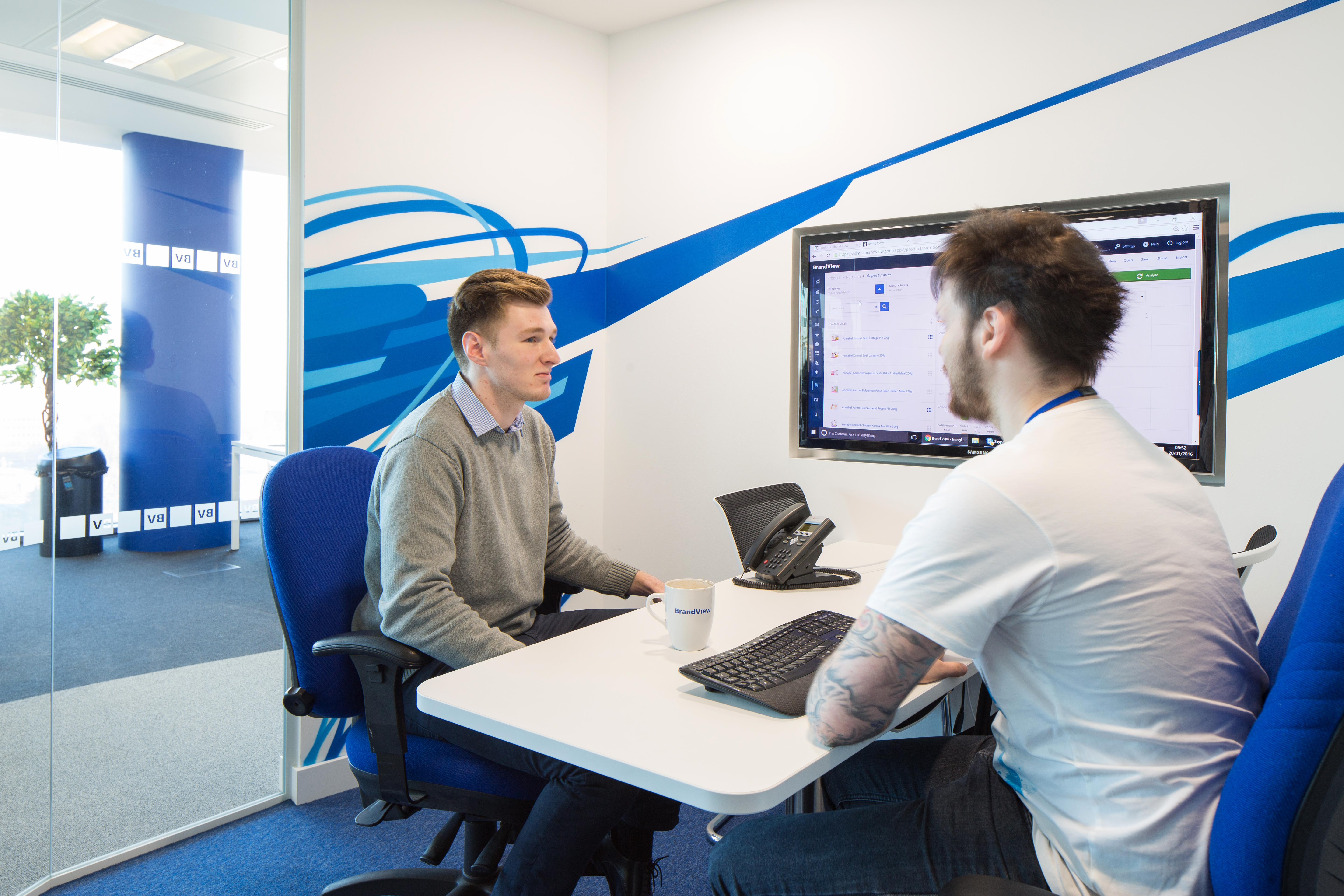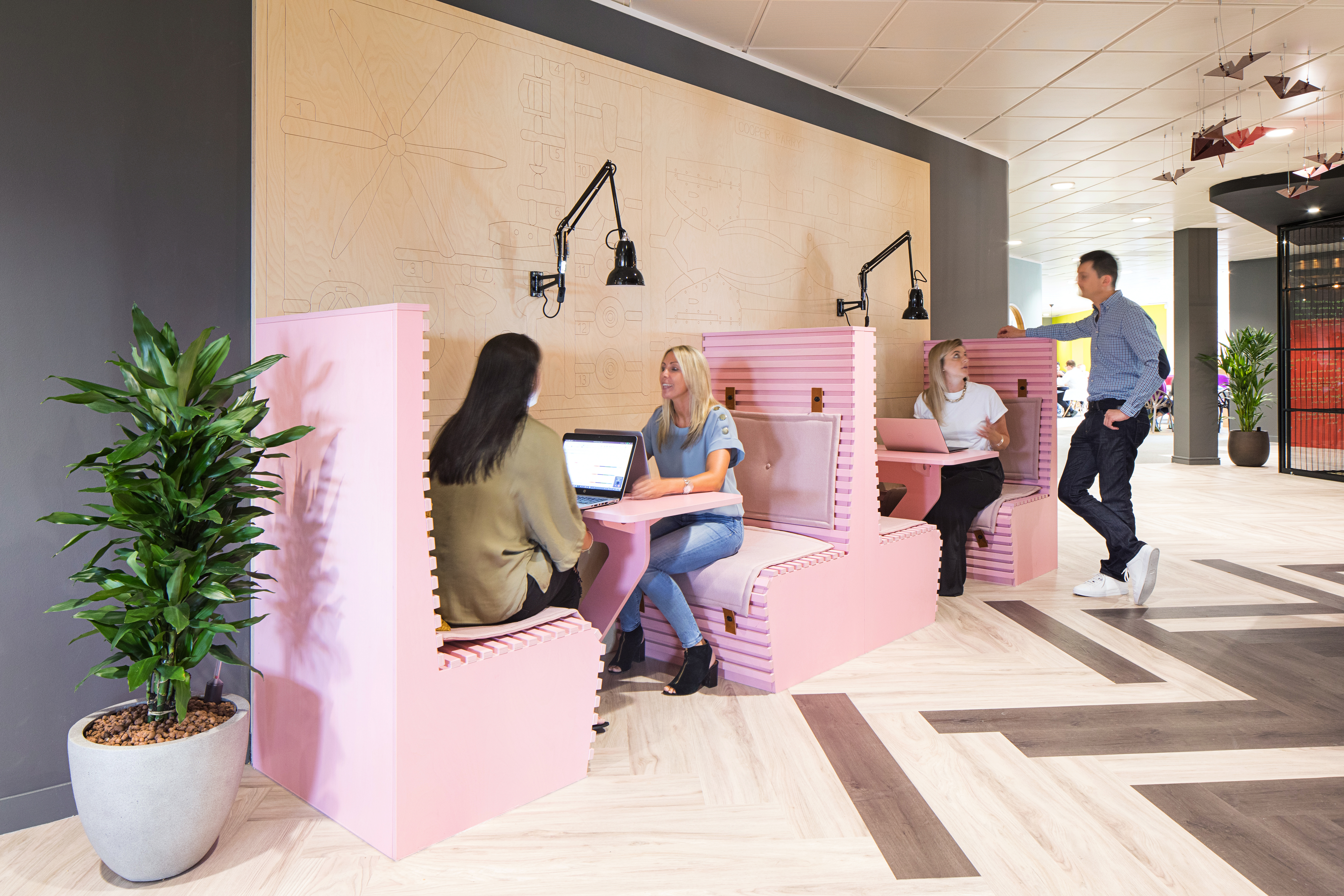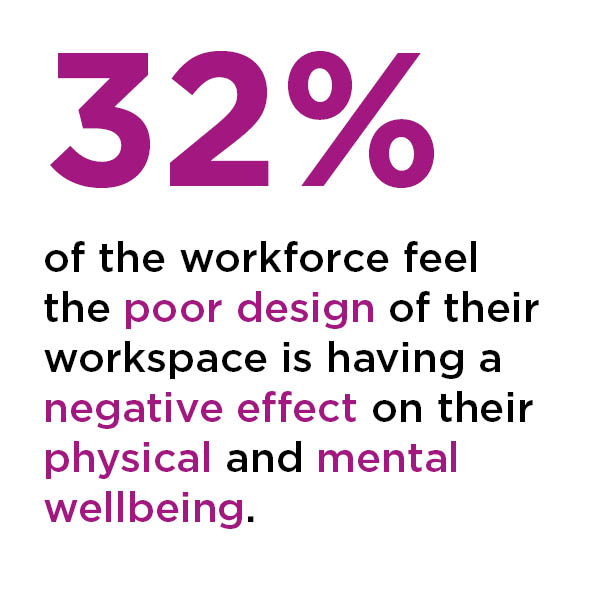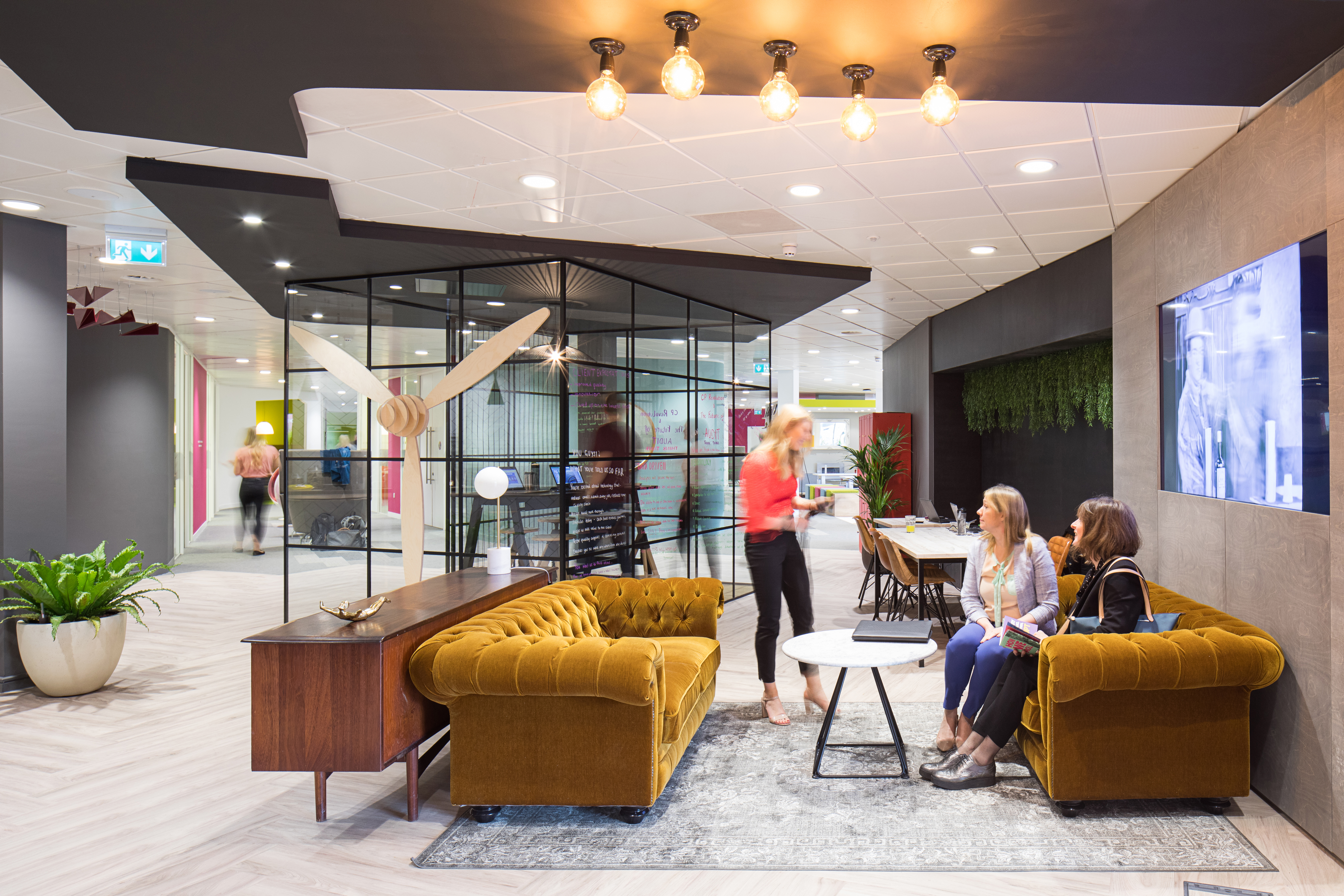OP transforms Cundall's Birmingham meeting suite
16 Jan 2025
Published on:
04 August 2021
Updated on:
19 August 2024
Read time:
13 minutes
With the emergence of Generation Z entering the workplace, businesses are challenged with creating a work environment that is all-inclusive for a diverse range of employees.
Companies committed to competing in today's dynamic marketplace focus on building a culture that includes a diverse workforce. Employees from younger generations have different demands than Gen X and Baby Boomers. They are also more selective about firms they want to work for.
As well as attracting employees, having a diverse and inclusive workplace is the right thing to do.
In the last twenty years, there has been a significant shift in legal and moral policy. Companies were encouraged to recruit employees that were often overlooked or excluded, despite having the skills and qualifications to perform the job.

UK businesses have responded positively. People with disabilities, pregnant women and working mothers are counted as part of a diverse workforce. But it is apparent that facilities in most office environments are insufficient.
Today's office designs have to go beyond the typical considerations of age, race, colour, sex, and sexual orientation. They must also include people with a physical disability or mental illness, together with different personality types, that work more efficiently in a workspace customised to their needs.
That's not to say every workplace has to be intricately planned to suit each individual. Far from it. Inclusive office designs take a holistic approach and give employees greater autonomy to where they want to work and how they want to work.
In 2016, a study published by Gallup found that only 8% of UK employees are engaged at work. The findings sent shockwaves among companies that recognise engagement is linked with productivity, employee retention and company culture.
It is well known that there is a strong correlation between engagement and high employee satisfaction. HR professionals have found that when employees are given greater control over their physical workplace, engagement levels are higher.
Organisations that show they trust employees to perform their job no matter where they work typically see better results. For example, this includes workplace practices like flexible working. Furthermore, employees tend to perform better in comfortable places that do not invite stress.
Most open-plan offices do not accommodate the needs of every employee. The most engaged workers are those with more control over their work experience who can focus on their performance levels.

Forward-thinking businesses provide a holistic approach by incorporating inclusive design practices and concepts. Agile offices are becoming more commonplace. Hierarchical barriers have been pulled down and a no dedicated desk policy encourages hot-desking, collaboration and impromptu innovations.
Some companies are taking human efficiency to the next level. In Amsterdam, Deloitte's advanced office design utilises apps that organise workstations for employees built around their schedule. The computerised system knows which work environments they prefer to perform certain tasks and assigns them to an appropriate workstation.
However, this level of flexibility and freedom is not for everyone. Some people, particularly older generations and introvert personality types prefer workstations they are familiar with, around people they know and feel comfortable with.
In a nutshell, modern office designs should position all users at the centre. They should function in a way that makes it easier for employees to perform their job efficiently and effectively. Most importantly, employees want to be in an environment that enables them to be productive.
Inclusive office design is about accommodating choice, flexibility and practicality a work environment that benefits everyone. Just as importantly, the layout and look should engage employees and inspire them. A change of scenery, as they say, is as good as a rest. Research shows that changing environments can spark new ideas and encourage collaboration.
Numerous studies have uncovered the inadequacies of traditional office designs. Poor air quality and a lack of light contribute to illness and an increasing number of lost workdays due to absenteeism.
The abundance of distracting noises in a typical office environment causes stress, frustration and animosity. Disrupted attention spans culminate in lower levels of productivity, and rising stress levels create a toxic workplace.
A YouGov survey revealed over a third of employees in the UK are more likely to feign illness or work from an alternative location if the office design is uninspiring.
What's more, a staggering 32% of the workforce feel the poor design of their workspace is having a negative effect on their physical and mental wellbeing.

Major complaints include a lack of natural daylight, a void of visual stimulus and the inability to concentrate. Employees want to have a variety of spaces in which they can work.
Moreover, there are subtle inclusive workplace practices to consider such as facilities for disabled people and pregnant women. A startling disparity is that many buildings are fitted with heating and cooling systems designed around an 11.5 stone male. Adding a thermostat is a simple solution.
Companies are beginning to understand the challenges traditional open-plan offices create. They want a more diverse and inclusive workplace. A change in work environments is also being driven by the desire for younger generations to work away from the office some days.
The option of introducing flexible working policies have presented C-Suite executives with the opportunity to downsize office space and significantly reduce overheads and costs.
That also presents businesses with the opportunity to install an inclusive office design that is favourable to a diverse workforce.
Despite the negative media around open-plan layouts, your workforce has to share a floor. There will always be some form of disruption and loss of productivity, no matter how inclusive a workplace is.
However, office designs centred around agile working deliver solutions that suit everyone. They offer flexibility, fluidity and create appropriate work environments for all members of staff.

The ultimate goal of hybrid offices is to maintain the scope for informal communication, encourage organic interaction, and enhance employee engagement. But also to provide work environments that soften noise and enable employees to focus.
Small clusters of desks that accommodate two to four team members provide an option for team members to work together without distraction.
Inclusive design practices help with diversity in the workplace. For employees that get stressed out because they can't concentrate with the noise around them, private pods, telephone booths and cornered off quiet zones help to keep noise levels down and concentration levels up.
Meeting booths fitted with soundproof walls are also popular installations in diverse and inclusive workplaces. Acoustic pods are standalone booths that essentially create a room within a room and are ideal for small meetings, brainstorming and informal one-to-one sessions.
Another advantage of acoustic pods is they don't take up a lot of space. It's also possible to equip the booths with features that are useful for meetings such as whiteboards and TV monitors, together with LED lighting and air circulation units to make sessions comfortable for users.
One of the most alarming findings to surface from the mountain of research in recent years is that modern office designs have a negative impact on health and wellbeing.
Noise and toxic environments have been found to increase stress and damage mental health. Meanwhile, poor air quality and insufficient lighting diminish brain function and productivity.
Office designers are finding solutions to tackle the list of problems. With a growing focus on health and wellbeing in office settings, biophilic office designs are growing in popularity whilst agile promotes movement. Both link with inclusive design, taking into account the needs of a diverse workforce.
Biophilic elements require more than a few potted plants left around the office. Humans have an inherent yearning for nature because it makes us feel more relaxed and peaceful.

Installing green walls and adding natural elements such as timber wood, marble, granite and stone help to reduce stress levels and enhance aesthetics. NASA also says these plants clean the air.
A study published by the HR advisory firm Future Workplace revealed the number one perk employees demanded was natural light and views of the outdoors.
The report found that 47% of employees that work in dismally lit offices feel tired and struggle to sleep at night. A lack of natural sunlight interrupts our inbuilt rhythm so are not getting sufficient rest.
Offices that are not in a position to invite natural light in through large windows have the option to install an advanced LED lighting system that mimics the colour and intensity of natural light.
Other initiatives to improve health and wellbeing include breakout areas that encourage employees to take a break from their work and move around the office. Constant sitting has shown to increase the risk of heart disease, diabetes, depression and obesity.
Breaking away from the desk is ideal for recharging cognitive batteries. To keep the brain at an optimum, medical professionals advise taking 5-15-minute breaks every hour.
As a result, office designers have engineered the concept of breakout areas. Although designed specifically for office workers to take a break from their work, break out areas can inject creativity, inspiration and motivation for employees when they do go back to their desk.
Whilst the most common approach to a breakout area will be comfortable seating and coffee tables, some firms want to install areas that encourage physical activity; mini football, table tennis and even mini-golf are options. If you're striving for a diverse and inclusive workplace, ask what staff want.
We're also starting to get demands for therapeutic spaces that help employees develop a better work-life balance. Inspired by Google's sleeping pods and Microsoft's Treehouse, there is an increasing number of requests for meditation or prayer rooms for diverse religions, gyms, creches and baby changing rooms for working parents, and areas for employees to leave their pets.
To get the most out of a diverse workforce, and keep everybody happy, companies need to create an inspiring and inclusive work environment where people want to spend their time.
In most situations, firms only need to perform an interior office design. In other situations, you may need a complete overhaul and consider a retrofit or office refurbishment.
The end goal is to provide a workplace that is welcoming to everyone. Given the work environment is a decisive factor people consider whether they want to work for your company, it's important that you provide incentives for existing employees to stay in the job and to attract new recruits.
Inclusive design should not be an afterthought. It has to be planned in advance rather than taken as a retroactive measure. Include your staff in the decision-making process from the start, show them you care about their needs and get them excited about the prospect of an amazing new office.
Office Principles understand the importance of planning and encourage your internal office design team to involve staff members so you can build a holistic view of your entire workforce.
An inclusive office design nurtures a solid company culture, improves engagement and enhances job satisfaction. A happy workforce results in greater business success.